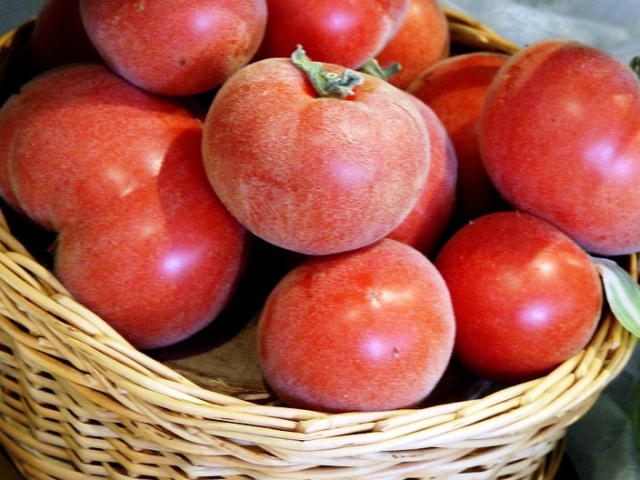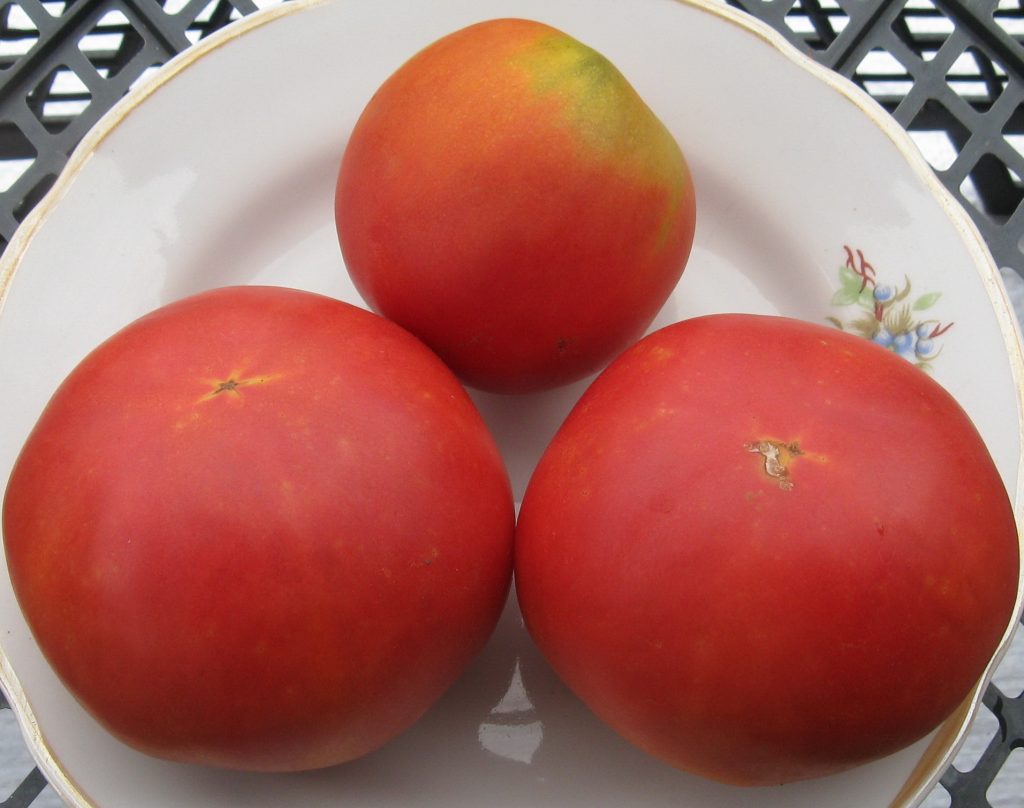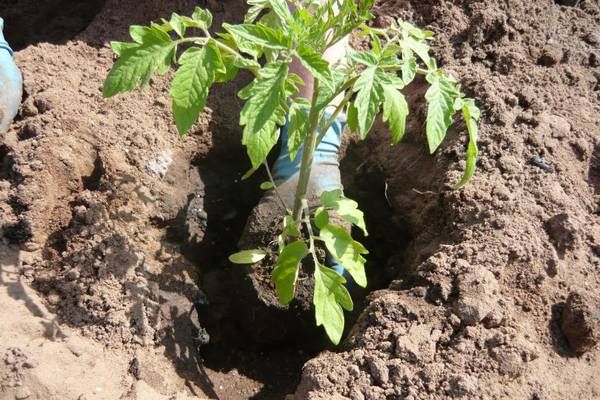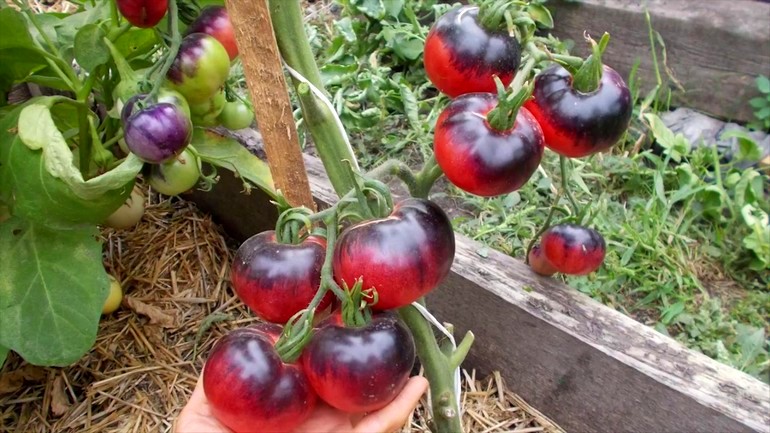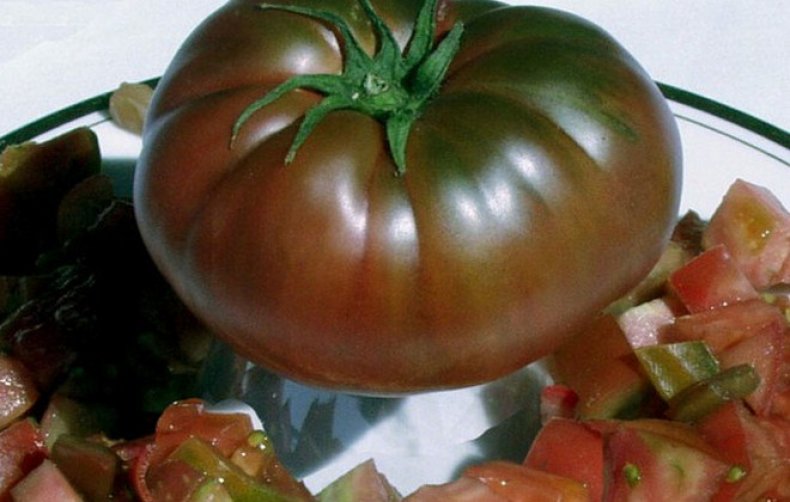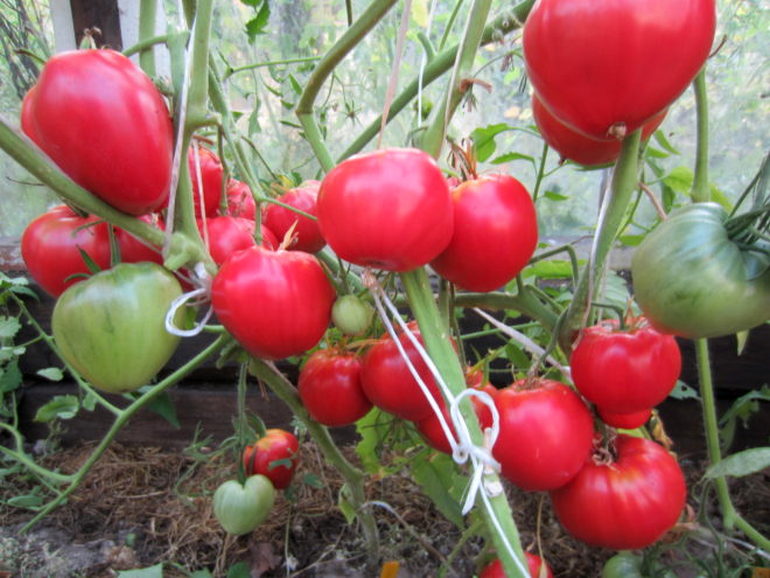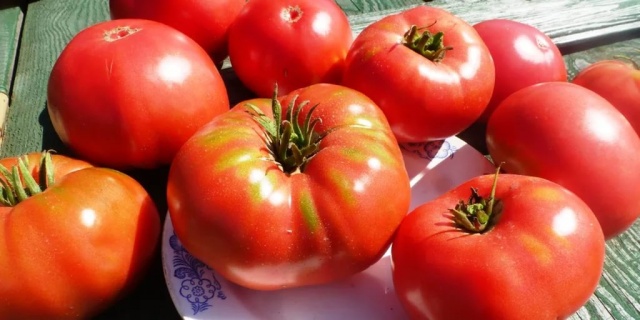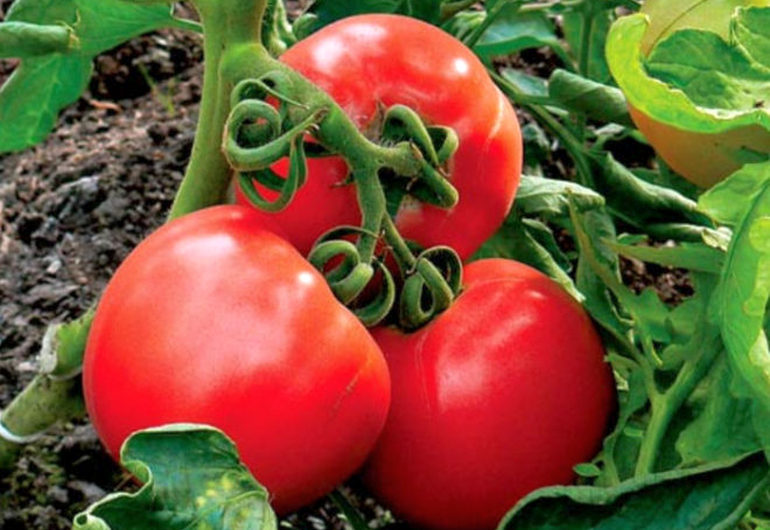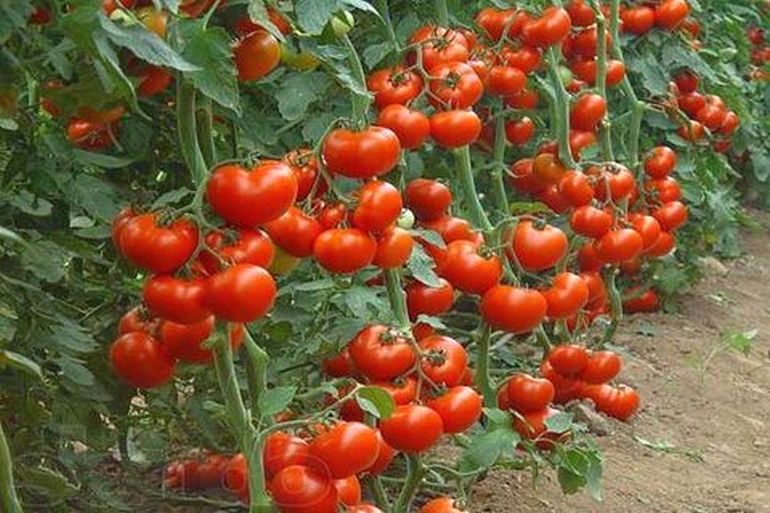Content:
Tomato Peach is an indeterminate variety that is endowed with an original appearance and excellent characteristics. "Fluffy" tomatoes are famous for their sweet taste and are highly resistant to adverse conditions, diseases and pests. What other features does this variety have, and where can a crop with a fruit name be grown?
History of creation
The Peach variety was developed through numerous experiments in 2002. The country of invention is Russia. After some time, the tomato was entered in the State Register of the Russian Federation as a crop intended for growing in open and closed ground. Today, an unusual tomato is successfully grown in Russia, Moldova, Belarus, Ukraine.
Description and characteristics
Tomato Peach is a mid-season indeterminate variety. Depending on where the plant is cultivated: in the garden or in the greenhouse, the height of the bushes varies from 150 to 180 cm. The stems are strong, rich green. The leaf is large, similar in shape to a potato. Rhizome is powerful, well branched.
Fruits and leaves are covered with a short whitish downy. Description of Peach tomatoes depends on the subspecies of the variety. The main differences between the modifications are the degree of pubescence and fruit color. Rounded tomatoes can be red, yellow, orange, pink. The size of the fruits is average - 100-150 g. The first inflorescence is formed over 7-8 leaves and is repeated every two following ones. Usually 5-6 ovaries are formed in one brush. Fruiting begins towards the end of July and lasts until autumn.
The pulp is tender, moderately juicy. The taste is sweet, without a sour note, and the smell is intensely tomato. Thanks to its good organoleptic characteristics, baby food is prepared from Peach tomato. The use of tomatoes is universal: the fruits are eaten fresh, they are made into pastes and rolled into jars for the winter.
The Peach tomato variety is endowed with high resistance to late blight, rot, powdery mildew. Bushes are practically not affected by such dangerous pests as aphids, ticks and a bear.
Varieties of varieties
Peach Tomato is one of the representatives of the Solanaceous culture, which have many modifications. So on the territory of Russia you can find the following types:
- Peach Yellow. Forms medium-sized creamy fruits. The bush and fruits are pubescent. The variety has a high immunity to diseases and is distinguished in its group by a high yield. Besides, bushes hung with yellow fruits will decorate any garden;
- Orange Peach. From the moment the shoots appear until the beginning of fruiting, 85-95 days pass. The bush is determinate, compact. The height of the plant does not exceed 50-60 cm. The stems grow up to 1-1.2 m only if the gardener transfers the growing point to the lateral shoots. However, despite the fact that more fruits can be harvested from the bush, the yield from 1 sq. M. the beds do not rise. Unlike other Peach varieties, the fruits of this type are covered with a smooth, glossy skin. The pulp is juicy and tender. The taste is sweet without sourness, with a barely perceptible fruity aftertaste;
- Peach Red. The growing season is 110-115 days. Intensely red fruits are covered with a short whitish downy. Red Peach tomato is suitable for indoor and outdoor cultivation;
- Pink f1. Super-yielding variety with high immunity.12 fruits are formed on one cluster instead of 5-6. Light pink fruit is moderately covered with white fluff.
Growing features
There is nothing difficult in breeding tomatoes with a fruit name. This variety does not have any peculiarities in terms of care and is grown according to the same principle as all other varieties of tomatoes. Cultivation begins with pre-sowing seed preparation and planting:
- For disinfection and prevention, on the eve of planting, the planting material is soaked in a pink solution of potassium permanganate or in an industrial fungicide diluted according to the manufacturer's instructions;
- Seeds are pre-germinated on a piece of damp tissue or immediately sown into a wet soil mixture of turf, sand and rotted manure. Embedding depth - 1.5-2 cm. Optimum temperature for the emergence of sprouts - + 22- + 26C;
- After the emergence of seedlings, the seedling container is placed on a sunny windowsill, while reducing the temperature to +20 C.
Tomatoes are planted on the garden bed in the second half of May or early June. Landing is carried out according to the following plan:
- Approximately 2-3 weeks before the intended planting, mineral fertilizers are scattered over the selected area, and then they dig deep into the earth. In order to prevent tomato diseases, the soil is abundantly shed with a solution of copper sulfate;
- On a cloudy day, pits are made in the garden bed and rotted manure, compost or complex fertilizer are placed in them, and then they are sprinkled with a handful of earth and watered with a small amount of water. Tomato planting scheme Peach - 3-4 plants per 1 sq. M. area;
- Seedlings are inserted into the holes, the roots are spread to the sides and sprinkled with earth;
- If desired, the garden bed is covered with hay or straw. Mulch inhibits the growth of weeds and slows down the evaporation of moisture.
Further care for Peach tomatoes consists of the following manipulations:
- Watering. Tomatoes love abundant, but rare watering, so the bushes are watered once a week with warm water under the root. Watering tomatoes every day, and even cold water, is impossible - due to constant humidity and sudden changes in temperature, plants will develop slowly and often get sick;
- Top dressing. The Peach tomato variety needs regular feeding. During active growth, the bushes are fertilized with ammonium nitrate, carbamide or any other mineral nitrogen-containing fertilizers. Opponents of synthetic dressings apply a mullein solution (1: 6) or chicken droppings (1:20) under the tomatoes. As soon as the plants set fruit, nitrogen mixtures are replaced with potassium-phosphorus ones. Tomatoes are fed 4-5 times with an interval of 2 weeks;
- Dive. Peach tomatoes are transplanted into separate pots from a large seedling container after the formation of 2-3 true leaves. The bush dives into the garden or greenhouse at the age of 2 months or after 5-6 leaves appear. Thanks to a double transplant, tomatoes grow a powerful rhizome and bear fruit better than those that have been transplanted only once;
- Shaping and pinching. In greenhouses, the length of the stems often reaches 2 m, so red Peach tomatoes, and all other indents with a similar name, are necessarily formed. Bushes lead into one stem, plucking off all the lateral processes for this;
- Loosening and weeding. These simple procedures accompany the cultivation of each plant. Peach tomatoes growing in loose soil not depleted by weeds are less likely to get sick and bear fruit more abundantly.
Advantages and disadvantages
When choosing a new variety, be sure to weigh all the pros and cons. The characteristics and description of the Peach tomato variety assure that the species has the following advantages:
- the original type of plants and the fruits themselves;
- high immunity to many diseases of crops of the Solanaceae family;
- the possibility of growing tomato everywhere;
- active formation of ovaries even under adverse weather conditions;
- pleasant taste;
- universality of application;
- resistance to low temperatures.
There are no drawbacks to the Peach variety, there are only a few features that you should pay attention to:
- The fruits are covered with fluff;
- Average yield.
Tomato Peach is an unusual original variety that gardeners fell in love with due to its unusual appearance, unpretentious care and high immunity. Tomatoes are suitable for growing in garden beds and greenhouses and are successfully cultivated by gardeners in several countries. "Fluffy" sweet fruits are consumed fresh, canned and prepared from them tomato juices.
